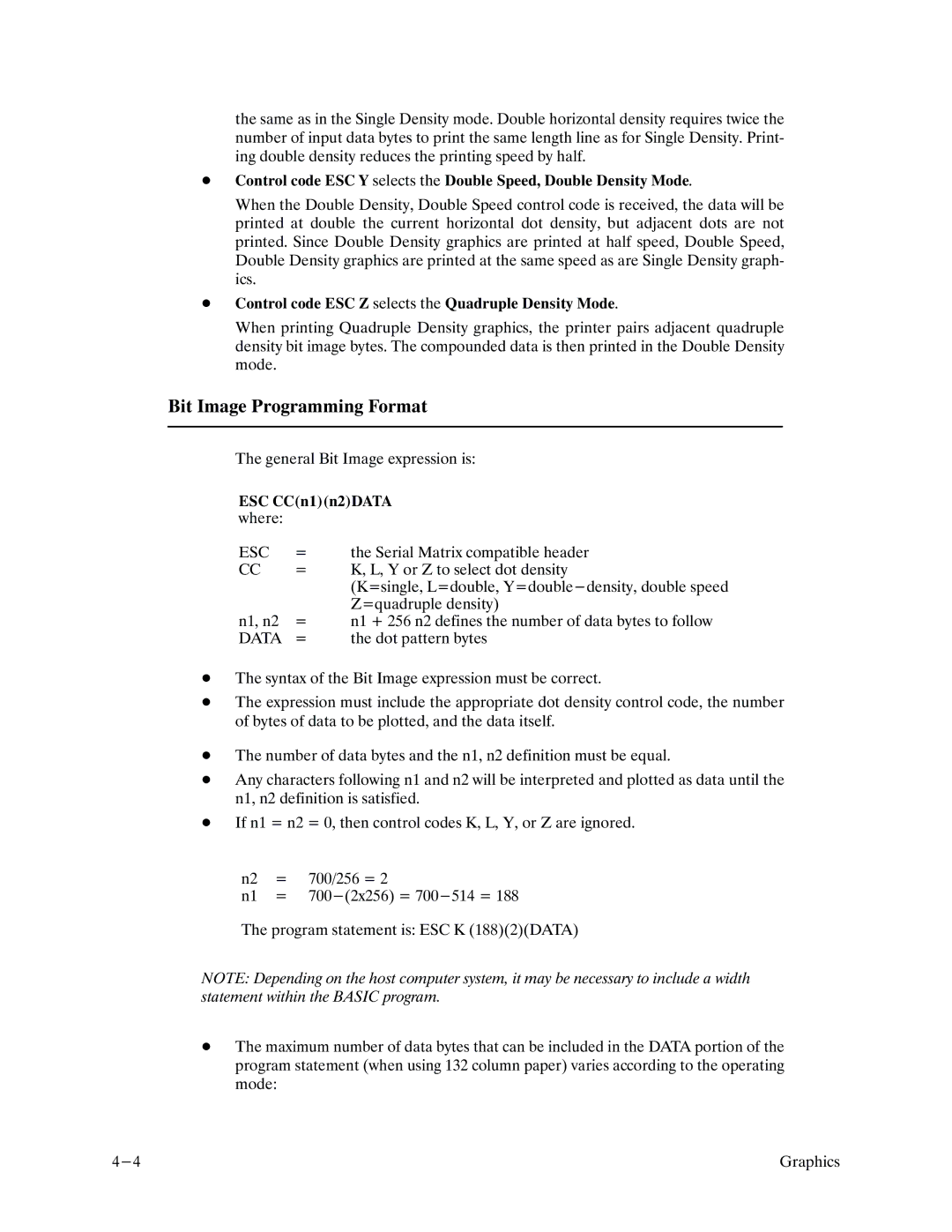the same as in the Single Density mode. Double horizontal density requires twice the number of input data bytes to print the same length line as for Single Density. PrintF ing double density reduces the printing speed by half.
DControl code ESC Y selects the Double Speed, Double Density Mode.
When the Double Density, Double Speed control code is received, the data will be printed at double the current horizontal dot density, but adjacent dots are not printed. Since Double Density graphics are printed at half speed, Double Speed, Double Density graphics are printed at the same speed as are Single Density graphF ics.
DControl code ESC Z selects the Quadruple Density Mode.
When printing Quadruple Density graphics, the printer pairs adjacent quadruple density bit image bytes. The compounded data is then printed in the Double Density mode.
Bit Image Programming Format
The general Bit Image expression is:
ESC CC(n1)(n2)DATA where:
ESC | = | the Serial Matrix compatible header |
CC | = | K, L, Y or Z to select dot density |
|
| (K=single, L=double, |
|
| Z=quadruple density) |
n1, n2 | = | n1 + 256 n2 defines the number of data bytes to follow |
DATA | = | the dot pattern bytes |
DThe syntax of the Bit Image expression must be correct.
DThe expression must include the appropriate dot density control code, the number of bytes of data to be plotted, and the data itself.
DThe number of data bytes and the n1, n2 definition must be equal.
DAny characters following n1 and n2 will be interpreted and plotted as data until the n1, n2 definition is satisfied.
DIf n1 = n2 = 0, then control codes K, L, Y, or Z are ignored.
n2 | = | 700/256 = 2 |
n1 | = |
The program statement is: ESC K (188)(2)(DATA)
NOTE: Depending on the host computer system, it may be necessary to include a width statement within the BASIC program.
DThe maximum number of data bytes that can be included in the DATA portion of the program statement (when using 132 column paper) varies according to the operating mode:
Graphics |
